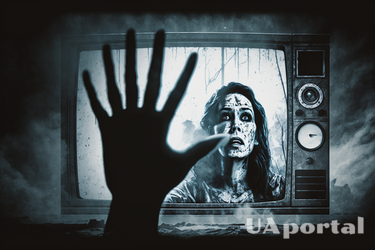The Evolution of Horror Films: How the Genre Developed

UAportal has prepared an article exploring the evolution of the film genre throughout history. The evolution of horror films is an example of how a genre can change and evolve over time.
The era of silent Cinema (1895-1927)
The silent film era was characterized by the absence of synchronized sound and dialogue. The films relied on visual storytelling and exaggerated acting to convey emotions and plot points.
Horror films of this era were often based on Gothic literature and explored supernatural themes such as ghosts and vampires. Among the famous horror films of this period are The Cabinet of Doctor Caligari (1920) and Nosferatu (1922).
Also read: The best fantasy films of the decade
Despite the limitations of the era, the filmmakers managed to create tense and atmospheric horror films that continue to influence modern cinema. The silent film era laid the groundwork for future horror films and introduced many plots and themes that are still present in modern horror films.
The Golden Age of Hollywood (1930-the 1950s)
The Golden Age of Hollywood marked a shift in the horror genre. With the advent of synchronized sound and dialogue, horror films began to incorporate voice and music to enhance tension and atmosphere. This era saw the rise of Universal's monsters, including Dracula, Frankenstein, and the Wolfman, who became iconic figures in popular culture.
Horror films of this era often dealt with themes of science and technology gone awry and the consequences of interfering with the natural order of things. Famous horror films of this period include "Frankenstein" (1931) and "Creature from Another World" (1951). The Golden Age of Hollywood cemented the horror genre as a profitable and popular style, paving the way for future horror films.
Also read: 5 best comedies of the late 2000s, which will definitely lift your spirits
New Hollywood (1960s-1970s)
The era of New Hollywood brought a new level of realism and social commentary to the horror genre. Filmmakers began to incorporate themes of politics, gender, and race into their films, leading to a new wave of horror films that were both scary and thought-provoking.
Among the famous horror films of this period, we can name "Night of the Living Dead" (1968) and "The Exorcist" (1973). The New Hollywood era also brought a new level of graphic resistance and brutality to horror films. Filmmakers have pushed the boundaries of what is acceptable on screen, leading to controversial films that have sparked debates about censorship and the role of violence in media.
Blockbuster era (1980-the 1990s)
The blockbuster era brought a new level of spectacle and grandiosity to the horror genre. Films became larger and more ambitious, with elaborate special effects and action sequences. This era saw such iconic horror characters as Freddy Krueger and Jason Voorhees, who became cultural icons.
Horror films of this era often dealt with themes of teenage rebellion and the consequences of youth culture. Among the famous horror films of this period is Nightmare on Elm Street (1984) and Scream (1996). The blockbuster era also marked a shift towards introspection and meta-horror, with films referencing popular horror plots and conventions. Filmmakers began playing with audience expectations and challenging the traditional boundaries of horror storytelling.
Digital Age (2000s–present)
The digital age has brought new opportunities and challenges to the horror genre. With the development of digital technologies, cinematographers have gained the ability to create complex and realistic special effects and visual effects. This era saw the emergence of "found footage" horror films, which added a new level of realism and immersion to the genre.
Horror films of this era often explore themes of technology and the Internet, with films such as Unfriended (2014) and The Caller (2002) using technology as a plot device. The digital age has also seen a resurgence of classic horror franchises, with remakes and reboots of iconic films such as Halloween (2018) and Child's Play (2019).
We will remind them, many actors and singers decide on plastic surgery because it is often a necessity for them. We told 7 famous men who adjusted their appearance.
If you want to receive the latest news about the war and events in Ukraine - subscribe to our Telegram channel!
